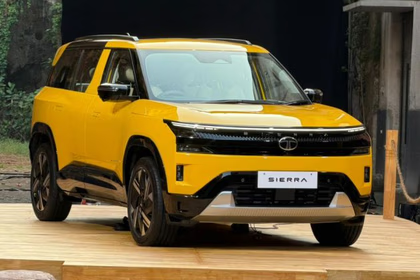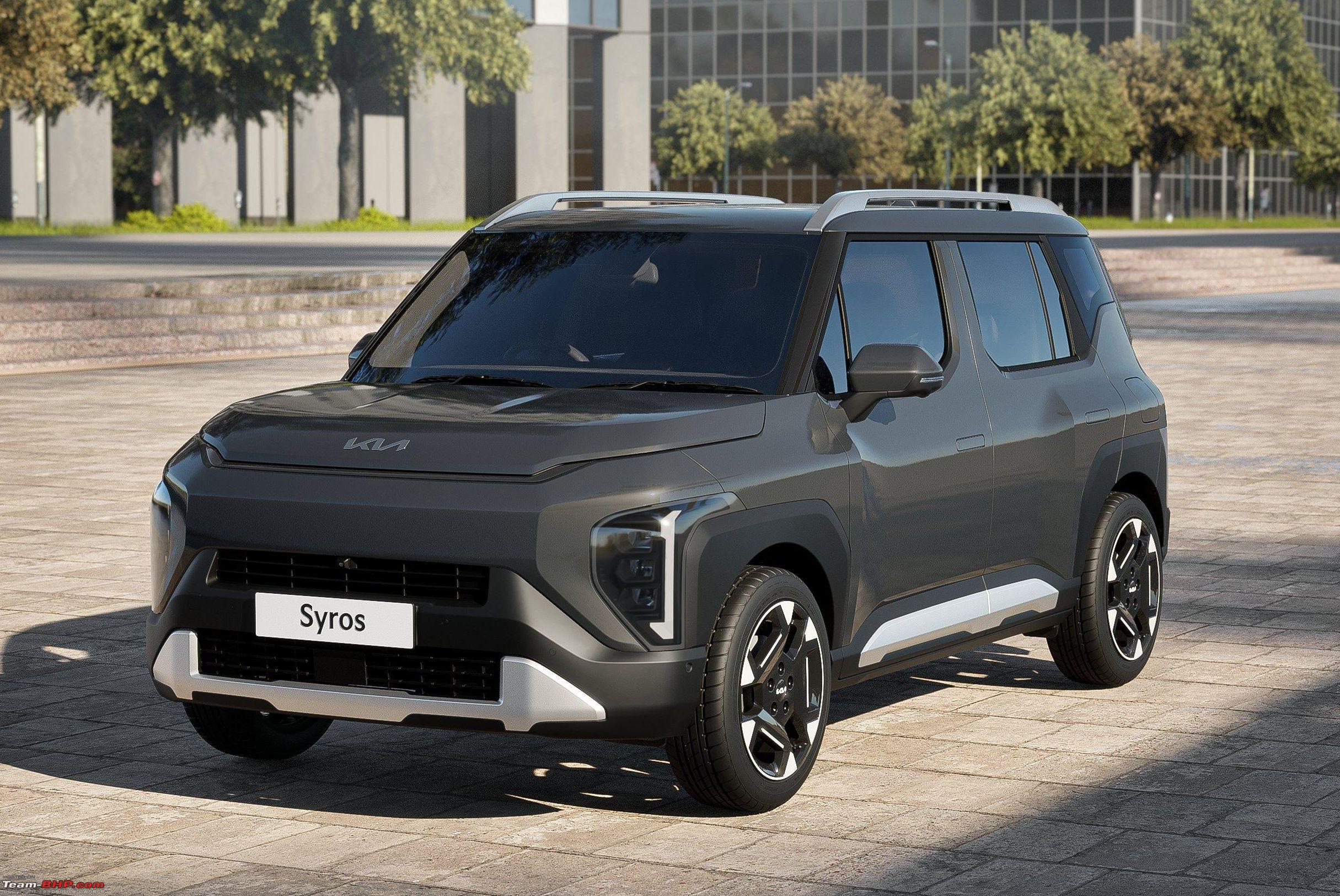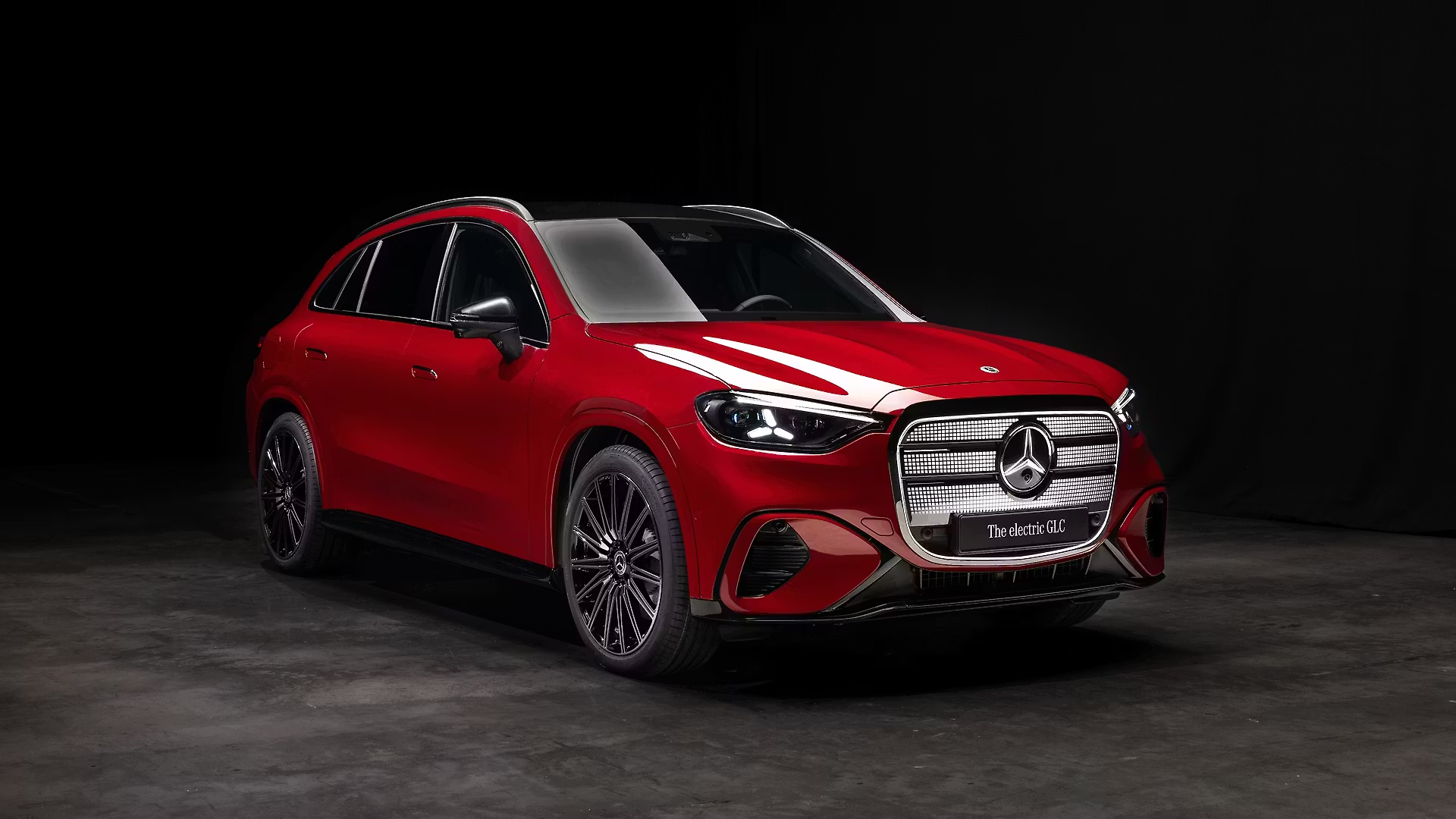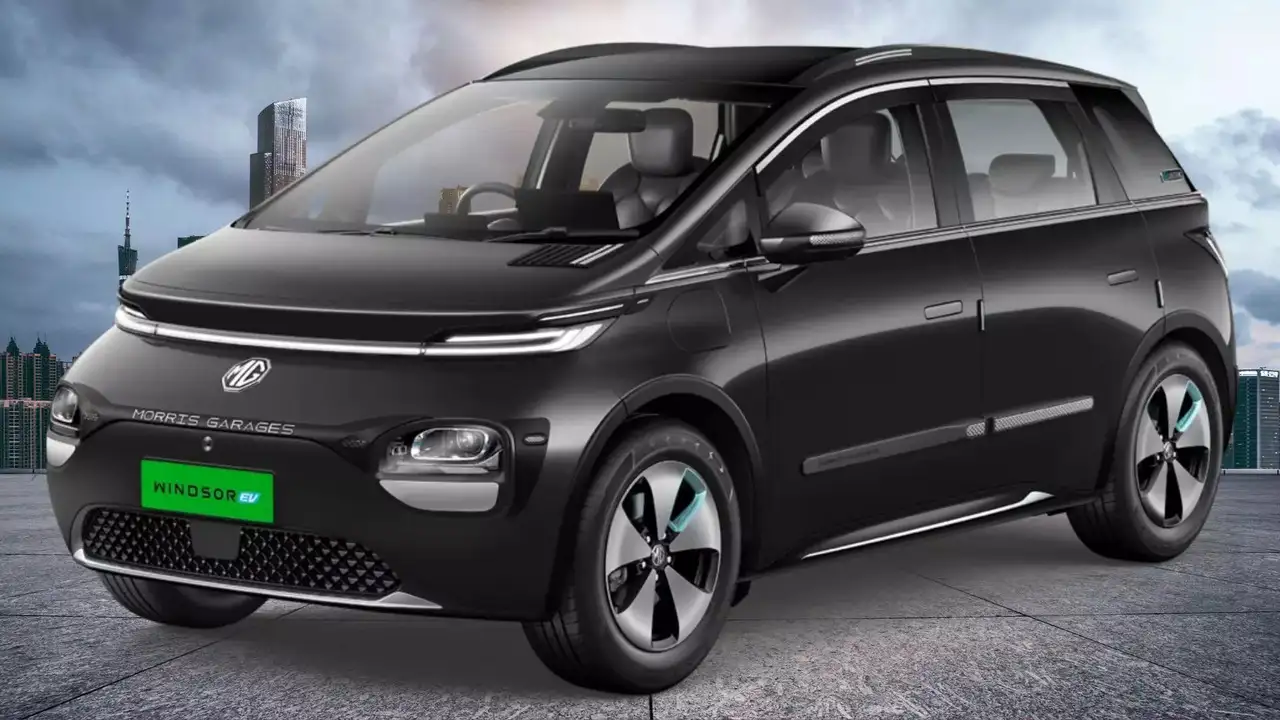Introduction
The Indian automotive market is entering a transformational phase, and the biggest disruption is from electric SUVs. Once considered niche, EVs are now evolving into mainstream choices driven by rapidly improving battery technology, increasing range, government incentives, and a growing charging network. Automakers-both Indian and global-are prioritizing the electric SUV category because it represents the perfect blend of practicality, performance, comfort, and aspirational ownership.
Why Buyer Preferences Are Changing
- Real-world driving range matters more than brand name now.
- The customers desire EVs that can comfortably deliver 400–650 km in a single charge, reducing charging anxiety during long-distance travel.
- Performance expectations are growing well beyond simple city commuting.
- Today, buyers want more than just compact EVs intended for short distances; they want instant acceleration, highway stability, and AWD options.
- The build quality and safety are uncompromising priorities.
- Features such as ADAS, 6–7 airbags, 5-star crash ratings, and structural strength are driving purchasing decisions more so than ever before.
Tech-loaded interiors are now a deal-breaker
- In EV SUVs, people expect things such as large screens, premium infotainment systems, connected car tech, panoramic sunroofs, and digital instrument clusters.
- Low operating expenses are persuading petrol/diesel SUV owners to transition towards EVs.
- The ₹1.2–₹1.6 per km running cost of a modern electric SUV appeals to many families in the face of increasing fuel prices.
Why These 8 SUVs Are the Most Important Launches:
- They cover every major price segment, from compact and affordable EVs to premium and luxury electric SUVs, giving customers choices across budgets.
- They bring with them next-generation EV platforms, such as Tata’s acti. EV and Mahindra’s INGLO, purpose-built for EVs rather than converted ICE models.
- They bring long-range, high-efficiency batteries; most of these SUVs claim a 450–656 km range that solves the biggest concern for Indian EV buyers.
- They combine practicality and aspiration, offering 5-seater family SUVs, sporty coupe EVs, and even a rare 7-seater EV SUV option.
- They trigger competition between Indian and global brands, which is likely to lead to better pricing, more features, and faster innovation for consumers.
Tata Sierra EV
The Tata Sierra EV is one of the most eagerly awaited electric SUVs in India, not only for its futuristic technology but also because it brings alive an icon from the 1990s. Tata Motors has designed it to balance the tastes of both lovers of nostalgia and new-age EV buyers, as it amalgamates rugged SUV character with a modern electric lifestyle.
Based on Tata’s dedicated acti. EV platform, the Sierra EV is likely to boast a long driving range, premium interiors, and the latest connectivity features to position it as a flagship lifestyle EV SUV for Indian families and highway users. The Sierra EV represents Tata’s ambition to climb higher in both the premium and electric SUV space, competing directly with mid-size EVs from domestic and global manufacturers.
- Final production-spec model already showcased in events, indicating that launch timelines are on track.
- Likely to enter mass production months before launch, ensuring availability in major cities from day one.
Design & Heritage: Modern Revival of the Classic Sierra
- Iconic three-quarter rear glass design retained, instantly recognizable to those who remember the original Sierra.
- Future-ready styling with LED lighting, muscular body lines, and EV-specific accents gives a rugged yet premium SUV appearance.
- Lifestyle-oriented exterior instead of purely off-road styling, to appeal to the urban explorer and adventure-focused buyer.
- Emphasize wide cabin space and enhanced visibility of the rear seating, while retaining the “panoramic side glass experience” of the classic Sierra.
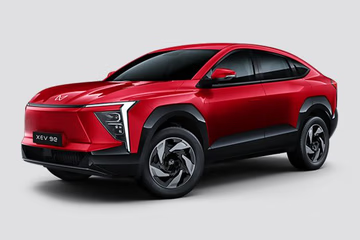 Battery & Range: An estimated 450–550 km
Battery & Range: An estimated 450–550 km
- Expected dual battery configurations allowing customers to choose between value and long-range-oriented variants.
- Real highway-usable range of more than 450 km, minimizing charging stops during long drives.
- Optimized for fast charging with DC support, it is expected to charge 10–80% in under 1 hour on high-speed chargers.
- High-efficiency motors and regenerative braking technology are designed to extend range further in city traffic.
Features: Triple-Screen Infotainment, Connected Tech, Premium Interiors
- Large driver display + central infotainment + passenger screen, placed on a clean, minimalistic dashboard.
- Connected car Ecosystem for supporting OTA updates: new features can be added remotely over time.
- Premium cabin material, panoramic sunroof, ambient lighting, and ventilated seats exude a luxury feel inside.
- Likely ADAS safety suite including adaptive cruise control, lane assist, and emergency braking.
Price: ~₹25–30 Lakh (Ex-Showroom)
- Expected to be slotted above the Tata Harrier EV and below the imports of luxury EVs, making it a premium mass-market EV.
- Low running cost compensates for the higher upfront price, making ownership value-rich for family buyers.
- Higher trims are likely to offer dual-motor AWD, which will push the pricing close to ₹30 lakh for the top variant.
- EV battery warranty expected to be 8 years / 1.6 lakh km, improving long-term confidence.
Why It Matters: Combines Nostalgia with Modern EV Tech
- One of the few EVs that carries an emotional brand legacy, instantly resonating with older car enthusiasts.
- Helps elevate Tata’s brand from a value EV maker to a premium EV competitor, thereby raising the perception of Indian EVs.
- Combines practicality and lifestyle, appealing to both urban convenience and extended-distance tourism.
- Strengthens Tata’s early mover advantage in India’s EV ecosystem ahead of most global rivals in this price band.
Mahindra XEV 7e (Electric XUV700)
The Mahindra XEV 7e is one of the most awaited electric SUVs in India, as it combines tried-and-tested practicality with road presence in the form of the XUV700 and a next-generation electric powertrain. As a full-size family SUV, it will be designed for long-distance ability with spacious interiors, modern EV technology, and premium comfort.
Unlike most city-focused EVs, the XEV 7e promises to remove range anxiety altogether, so this SUV is good for highway touring, weekend trips, and daily family commutes at a competitive price.
Launch: Late 2025 / Early 2026
- It’s expected to go on sale late in 2025, with retail deliveries extending into early 2026.
- It will be positioned as Mahindra’s first EV based on the large SUV segment and not on compact EVs.
- In fact, production-ready prototypes are already being tested on Indian roads, a sign that the development related to the launch has reached an advanced stage.
- Availabilities will likely be focused on metro cities initially, says Mahindra, before going national.
Platform: Mahindra INGLO
- The EV skateboard platform is built by INGLO, specifically engineered for electric vehicles, not adapted from petrol/diesel platforms.
- Flat-floor architecture enables better interior space, improved third-row comfort, and more cargo flexibility.
- The positioning of batteries underneath the floor lowers the centre of gravity, ensuring improved handling and ride stability.
- It is a future-ready platform with advanced safety features and next-generation software connectivity that can support OTA upgrades.
- The battery options come in 59 kWh and 79 kWh.
Offered with two battery packs:
- ~59 kWh for value-focused and city-plus-highway usability
- ~79 kWh, for customers prioritizing high range and premium performance
- This modular design allows cost optimization while still offering premium long-range capability.
- Larger battery variant expected on top trims, with a possible AWD configuration.
Range: Up to 656 km (claimed)
- Smaller battery variant to offer about 540+ km MIDC range, which would be good for a combination of city-highway driving.
- The larger 79 kWh pack may deliver up to 656 km MIDC, thus placing it among the longest-range EV SUVs in the given segment.
- Real-world range will likely sit between 420 and 500 km, making it practical for long-distance trips without frequent charging.
- Strong emphasis on efficiency to eliminate range anxiety for families and highway use.
Price: ₹21–30 lakh
- Introductory price of around ₹21 lakh (ex-showroom) for the lower battery variant is expected.
- The higher variants with the bigger battery, AWD, and top-end features may go up to ₹30 lakh (ex-showroom).
- Pricing strategy targets buyers migrating from diesel and petrol SUVs to electric alternatives.
- The model will probably disrupt the segment by offering full-size SUV space and long range at a mid-segment EV price.
USP: Electric SUV with Long Range for Family and Long-Distance Trips
- It was designed as a proper long-range touring EV, not simply a city-restricted EV.
- Spacious cabin and likely 6-/7-seater configuration make it appealing to family-centric buyers.
- Positioned as the EV alternative to large ICE SUVs, with all of the size, comfort, and power, but without fuel costs.
- Combines a strong range with practicality and modern tech, reducing the need to wait for luxury EV options.
- Ideal for those users who want to switch to EV but refuse to compromise on space, range, or performance.
Mahindra BE 6
The Mahindra BE 6 represents one of the most futuristic and dynamic EVs in Mahindra’s Born Electric lineup. Unlike the traditional SUV look of the XEV 7e, the BE 6 comes with a coupe-style sporty silhouette targeted at younger and more performance-oriented buyers.
With its aerodynamic profile, tech-forward interior, and long-range battery options, it offers an EV that looks aggressive, drives fast, and remains usable for everyday and long-distance travel. As such, it is expected to rival mid-size SUVs but with a distinctly premium electric identity.
Segment: Mid-Size EV SUV
- Positioned between compact and full-size EV SUVs, it’s the ideal option for urban families and young professionals.
- Coupe-like sloping roofline delivers a sporty presence without compromising rear cabin space significantly.
- Will compete with future EV rivals in the ₹20-30 lakh space, including Creta EV, Curvv EV and Harrier EV.
- The Born Electric design is bold and modern, immediately giving it a visual advantage over the more traditional SUV-shaped EVs.
Battery & Range: 59 kWh ~556 km, 79 kWh ~682 km
- Expected to launch with two battery pack options, like other INGLO-platform EVs:
- ~59 kWh — capable of delivering up to ~556 km MIDC
- ~79 kWh — can deliver up to ~682 km MIDC
- Real range on the road will be from 430 to 520 km, depending on driving conditions and the kind of battery selected.
- Larger battery variant expected to also offer higher performance, possibly with dual-motor all-wheel drive on top trims.
- High-efficiency battery + aerodynamic design combine to boost energy economy on highways.
Price: ₹18.90 lakh (base)
- Expected to enter the market aggressively with a starting price of around ₹18.90 lakh ex-showroom.
- This pricing also makes the BE 6 one of the more approachable long-range EV SUVs in India, targeted at buyers who want premium EV styling minus the luxury EV price tag.
- Higher-performance or AWD variants will probably touch ₹25–28 lakh, considering battery selection and feature add-ons.
- Compelling pricing could enable it to undercut rivals with superior range and design appeal.
Features include sporty performance, connected features, and a premium cabin
- Fashionable interior design; multi-screen digital cockpit layout with next-generation UI.
- Sport-tuned driving dynamics with quick acceleration, responsive steering, and stable high-speed cruising.
- Advanced connected features, including OTA software upgrades, ADAS suite, and EV-centric telematics.
- Luxurious materials, ambient lighting and a lifestyle-driven cabin theme aimed at a young audience.
- Expected support for fast charging: 10–80% charge in the shortest duration when using a high-power DC charger.
Significance: Affordable Long-Range EV Option
- Brings long-range EV performance within reach of mainstream mid-size SUV buyers.
- Encourages mass adoption of EVs by offering a premium product at a competitive entry price.
- Fills an important gap for buyers wanting style + performance + long range, not pure practicality.
- Serves as a bridge to Mahindra’s Born Electric, which will be EV-first.
Mahindra XEV 9e
The Mahindra XEV 9e is positioned as the flagship of Mahindra’s upcoming electric SUV lineup. It serves as an electric alternative for high-end turbo-petrol and diesel SUVs with its long-range capability, advanced tech, and grand touring comfort. With multiple battery options, a futuristic cabin, and road-dominating proportions, the XEV 9e is expected to be the most sophisticated electric SUV ever produced by Mahindra.
Segment: Premium Coupe-Style SUV
- It targets the premium mid-to-high SUV market, with a sporty coupe roofline and aggressive Born-Electric styling.
- Positioned above the BE 6 and XEV 7e in terms of size, road presence, feature list and power output.
- Designed to compete with premium electric SUVs from Hyundai, BYD and MG in the ₹25–35 lakh range.
- Combines SUV practicality with sports-car-like aesthetics that appeal to both performance-driven and lifestyle-focused buyers.
Battery & Range: 59 kWh ~542 km, 79 kWh ~656 km
Two battery pack options expected at launch:
- ~59 kWh — ~542 km MIDC range
- ~79 kWh — ~656 km MIDC range
- Real-world range estimated at 410–500+ km, depending on traffic and terrain.
- The larger battery variant is to be paired with dual-motor AWD, promising enhanced acceleration and driving dynamics.
- High-efficiency cooling and thermal management systems provide stable long-distance performance in Indian climate conditions.
Price: Top Variant ₹30.5 lakh
- Higher variants are expected to reach ₹30.5 lakh (ex-showroom), reflecting its position as Mahindra’s premium EV flagship.
- Base and mid-variants will likely start below the top-end pricing, offering wider accessibility based on performance and feature needs.
- Its pricing strategy places it squarely in the aspirational EV segment, where buyers seek luxury, performance, and cutting-edge tech in one package.
- Despite the premium price band, the depth of features and performance aims to undercut imported EV rivals that boast similar specs.
USP: Full-size EV SUV with premium interiors and advanced technology.
- The most luxurious EV from Mahindra is designed to provide premium cabin materials, soft-touch panels and lounge-like comfort.
- Expected to feature a multi-screen digital dashboard, next-gen ADAS suite and advanced connected-car ecosystem with OTA upgrades.
- When coupled with a powerful drivetrain, the aerodynamic coupe form positions it as a “performance luxury EV,” rather than simply a family EV.
- Cabin experience focused on long-distance comfort: ventilated seats, large sunroof/panoramic glasshouse, high-end sound system.
- The end product of Mahindra Born Electric represents the best the brand has to offer in style, performance, and modern electric vehicle engineering.
Mahindra XEV 9S (7-Seater)
The Mahindra XEV 9S has been designed to appeal to those buyers who need the space, practicality, and comfort of a full-size 7-seater SUV, now propelled by a modern electric drivetrain. While most of the upcoming EVs in India are zeroing in on 5-seat configuration and sporty coupe design silhouettes, the XEV 9S prioritizes family usability and long-distance comfort.
Offering three rows of seating, a spacious cabin, and advanced EV features, it will provide an electric alternative to some very popular petrol/diesel 7-seater SUVs. It is expected to combine convenience with long range, making it suitable for inter-city travel, joint families, and customers who prefer a big and premium SUV.
Launch: 27 November 2025
- Anticipated official market debut on 27 November 2025, strategically positioned in time to meet the festive/winter buying seasons.
- Expected to start deliveries in phases, first in metro cities since the charging network is concentrated there.
- Launch timing ensures market differentiation from other EV launches that are expected around 2025–26.
- Likely to be one of Mahindra’s key brand-building models in its new EV expansion roadmap.
Configuration: 7 Seats, INGLO Platform
- Based on the INGLO dedicated EV architecture, this was designed for optimal battery placement and interior space.
- True 7-seat layout with three rows; ideal for larger families and multi-passenger use.
- Flat-floor platform likely to improve third-row knee/foot room relative to ICE-based SUVs.
- Large boot space is expected when the third row is folded, making it practical for long road trips and airport luggage.
Battery and Range: Presumably 59 / 79 kWh Variants
- Expected to share battery options with other INGLO models:
- ~59 kWh — more value-oriented, long-city-range choice
- ~79 kWh — long-range pack for highway touring and performance variants
- Real-world driving range is likely to fall between 400 and 520 km, depending on the chosen battery and load/ passenger configuration.
- Fast-charging compatibility is expected to support quick inter-city travel, reducing downtime on long trips.
- The thermal management system performs efficiently at full passenger load conditions in hot Indian conditions.
USP: Only 7-Seater Electric SUV in This List — Ideal for Large Families
- Stands out as the only EV in this lineup to offer three-row seating, making it uniquely practical for larger families.
- Perfect for buyers upgrading from petrol/diesel 7-seat SUVs like XUV700, Safari, Alcazar, and Hector Plus to a cleaner, modern EV alternative.
- Allows EV adoption without compromising on space, seating capacity, and real-world practicality.
- Expected to offer a comfortable and premium cabin experience for all three rows, unlike many 7-seat EVs globally that compromise on rear space.
- Aimed at customers wanting a full-size family EV with long range, not just a stylish or compact electric SUV.
Mahindra XUV3XO EV
The Mahindra XUV3XO EV will be among the more affordable electric SUVs in the country, with all the practicality and driving character intact of a compact urban SUV. It builds upon the impressive success of the XUV3XO in its petrol/diesel avatar and replaces the internal combustion powertrain with an efficient electric drivetrain optimized for everyday use inside the city.
With its intelligent feature list, compact dimensions, and attainable price positioning, the XUV3XO EV hopes to make electric mobility mainstream for young professionals, city families, and first-time EV buyers shifting from hatchbacks and compact SUVs.
Segment: Compact Urban SUV
- Designed for city-focused usage, with easy manoeuvrability, compact parking footprint, and light steering.
- It’s positioned in the compact/mid-compact SUV segment, ideal for individuals or small families.
- Will rival Tata Nexon EV MR, Punch EV Long Range and MG Comet Plus (higher trims).
- Aims to offer an SUV experience and higher ground clearance without high EV pricing.
Battery & Range: ~35 kWh Battery, 300–350 km
- Powered by an estimated ~35 kWh battery, optimized for daily commute efficiency rather than long-range touring.
- Expected driving range: 300-350 km on MIDC test cycle, enough to cover 4-5 days of average urban driving at one charge.
- Real-world city range expected around 220-260 km, depending on the usage of AC and traffic conditions.
- Fast-charging support is expected to allow for quick top-ups on breaks during work or during weekend getaways, if needed.
USP: Affordable City EV SUV, Perfect for Urban Commuting
- Designed to be one of the most affordable electric SUVs in the country, with mass-market penetration.
- It’s ideal for office-goers, students, and nuclear families looking for modern SUV comfort sans high charging or driving-range stress.
- Compact footprint + EV torque ensures effortless city driving, quick acceleration in traffic, and whisper-silent operation.
- Lower running costs compared to compact petrol/diesel SUVs make it desirable for daily running and ownership.
- Expected to introduce many first-time buyers into the EV ecosystem, all while keeping maintenance simple and affordable.
Hyundai Creta EV
Among the most awaited electric SUV launches in India, the Hyundai Creta EV brings an already iconic and highly successful SUV nameplate into the electric era. Known for practicality, upmarket interiors, reliable performance, and strong brand trust, the Creta in its EV avatar is expected to retain all its strengths while adding silent electric performance, fast charging, connected car features, and improved refinement.
Positioned for mass appeal, the Creta EV is likely to be one of the biggest accelerants in fast-tracking EV adoption among mainstream SUV buyers, who have been waiting for a familiar, feature-rich and reliable electric SUV.
Launch: Late 2025
- Expected to arrive sometime towards the end of 2025, as per Hyundai’s ambitious EV roadmap for India.
- Testing on public roads is already well underway with prototypes, meaning development is at an advanced stage.
- Launch expected ahead of Kia’s mass-market EV to secure early market advantage.
- The reason is that Hyundai will most likely opt for a phased rollout with, initially, metro-city charging infrastructure support.
Battery & Range: ~400–450 km
- Expected to feature a battery pack in the ~45–50 kWh category, tuned for efficiency and long-term reliability.
- MIDC range expected to lie in the 400–450 km range, which is sufficient for daily use in the city and occasional runs on the highway.
- Presumed real driving range of about 300-360 km, perfect for multiple-day commuting with a single charge.
- Expected to support fast DC charging, reducing downtime during highway breaks and long journeys.
Features: Modern EV Styling, ADAS, Big Touchscreen
- Updated exterior with EV-specific styling elements like a unique grille panel, aero wheels, and blue/green accents.
- Spacious and premium cabin with a large touchscreen, digital instrument cluster, and dual-screen layout for the top variants.
- ADAS on higher trims is expected.
- Advanced connected car experience with OTA updates, voice commands, smart navigation, and EV charging planner.
- Quiet driving cabin paired with strong insulation for a refined, vibration-free drive experience.
USP: The popular SUV platform going electric is likely to accelerate EV adoption.
- Builds on the huge brand trust, sales success, and familiarity of the Creta nameplate, making EV adoption psychologically easier for mainstream buyers.
- Provides a safe, predictable transition for petrol/diesel Creta owners moving to electric without compromising comfort or usability.
- Expected to set benchmarks for reliability and after-sales service in the mass-market EV SUV space.
- Pricing is likely to target the sweet spot of the EV market, hence making it accessible for a greater number of Indian car buyers.
- It can be one of the best-selling electric SUVs in India.
VinFast VF7
VinFast VF7 marks the bold entry of the Vietnamese automaker into the mid-size electric SUV segment in India. It gets placed as a premium yet value-packed EV, blending sporty design, futuristic interiors, and strong performance numbers, instantly placing it in contention against established brands. It’s built for buyers who want international quality, a wide range, and powerful specs without premium-brand pricing.
Price: Starting ₹20.89 lakh (ex-showroom)
- Makes it one of the most competitively priced premium EV SUVs in India
- Undercuts several rivals offering similar features
Aimed at the mass premium category rather than the niche luxury
- Battery Variants: 59.6 kWh & 70.8 kWh
- Two powerpack options to serve the varied buyer requirements — city + highway
FWD variant designed for practicality & efficiency
- AWD variant suitable for enthusiasts in search of more control and better traction.
- Dual-motor setup for confident performance on any terrain
Performance: 201–348 bhp depending on variant
- Strong acceleration — sportier than most rivals at this price point
- Highly responsive throttle tuning for instant torque delivery
Enthusiasts will appreciate the punch of the AWD trim
- Range: Up to ~ 532 km
- Has excellent highway capability for long, out-of-city travel
- Efficient thermal and battery management for consistent performance
- Delivers lower running costs while maximizing usable range
Features: Premium cabin, HUD, Level-2 ADAS, multiple airbags
- Class-leading interior quality and tech appeal
- Large infotainment with modern software experience
- Below are key features that make the new 2022 WRX very different from other previous models, starting with:
HUD adds futuristic driver visibility & safety
- Level-2 ADAS brings advanced safety at accessible pricing
- Full suite of safety systems with multiple airbags and active protection features.
Why It’s Important: Global EV brand with strong specs at competitive pricing.
- Raises the standard of EV performance and features in the ₹20–30 lakh bracket.
- Brings stronger competition to legacy OEMs.
Comparison Table
| SUV | Battery | Range | Seats | Price (₹ lakh) | Launch |
| Tata Sierra EV | ~60–70 kWh | 450–550 km | 5 | 25–30 | Late 2025 |
| Mahindra XEV 7e | 59/79 kWh | Up to 656 km | 5 | 21–30 | Early 2026 |
| Mahindra BE 6 | 59/79 kWh | 556–682 km | 5 | 18.9+ | 2025 |
| Mahindra XEV 9e | 59/79 kWh | 542–656 km | 5 | 30.5 | 2025 |
| Mahindra XEV 9S | 59/79 kWh | 500–650 km est | 7 | TBA | Nov 2025 |
| Mahindra XUV3XO EV | 35 kWh | 300–350 km | 5 | TBA | 2025 |
| Hyundai Creta EV | 50–60 kWh | 400–450 km | 5 | TBA | Late 2025 |
| VinFast VF7 | 59–70 kWh | Up to 532 km | 5 | 20.89+ | 2025 |
Market Impact
The wave of electric SUVs coming in 2025-2026 could be a tipping point for India’s EV transformation. For the first time, the market isn’t limited to expensive luxury EVs or small compact EVs; buyers across every segment will have electric alternatives to their favourite petrol and diesel SUVs. With long-range batteries, faster charging, ADAS, connected tech and large-size platforms now entering mainstream price brackets, EVs aren’t niche anymore-they’re aspirational yet practical at the same time. This can change the shape of the Indian auto landscape over the next 24 months.
2025–2026 could be a turning point for EV SUVs in India.
- Over 20 new EV SUVs expected across budget, mid-size and premium categories
- Improved ranges (400–600 km) and quicker charging will help overcome buyer hesitations
- Mainstream brands such as Maruti, Hyundai, Mahindra, Tata, and Toyota joining the EV race signals maturity
EV infrastructure, subsidies, and localization will accelerate supply + demand concurrently.
- Families, urban commuters, and performance enthusiasts will have more options
- 7-seater EVs will finally address the needs of large households (such as Mahindra XEV 9S)
- Compact electric SUVs (XUV3XO EV, Punch EV, Nexon EV) will become ideal for users in the city.
Long-range mid-size models will serve both daily and highway travel: Creta EV, Harrier EV, MG Windsor, and eVitara
- High-performance EVs will attract enthusiast buyers upgrading from turbo-petrol SUVs
- Increased competition may drive prices down and increase technology adoption.
- OEMs will push aggressive pricing strategies to gain EV leadership in India.
- EV-exclusive platforms and battery localization will reduce production costs
- ADAS, fast charging, and digitized infotainment will be standard and not premium luxuries.
- Price correction for petrol/diesel SUVs could happen when EVs become increasingly popular
- Consumers stand to benefit from increased tech, increased range, and ultimately lower overall cost of ownership.
FAQs
Q1: When will these electric SUVs arrive in India?
A1: Most launches are scheduled between late 2025 and early 2026, but specific models like the Mahindra XEV 9S have already been confirmed for November 2025. Others will be rolled out through the 2025–26 calendar year.
Q2: Which one of these electric SUVs will have the longest range?
A2: The Mahindra BE 6 and Mahindra XEV 9e in their 79 kWh configurations should offer up to 656 km per charge, the longest-range models in the lineup.
Q3: Are any of these EV SUVs affordable to urban buyers?
A3: The base variants of both the Mahindra XUV3XO EV and Tata Sierra EV offer more affordable entries onto the market; they’re designed for cost-efficient urban commuting without sacrificing comfort or performance.
Q4: Which SUV models are ideal for families?
A4: Family-oriented models include the Mahindra XEV 9S (7-seater), Mahindra XEV 7e, and Tata Sierra EV, offering roomy interiors, long range, and strong comfort-centred features.
Q5: Do these SUVs support fast charging?
A5: Yes, most new models coming to the market will have DC fast-charging capability that allows 0–80% charging in 40–60 minutes for the larger battery variants.
Q6: Which SUVs have advanced features like ADAS?
A6: The Hyundai Creta EV, VinFast VF7, and Mahindra XEV 9e would come fitted with Level-2 ADAS, connected car technology, and next-gen infotainment systems with large touchscreens and HUD features.
Q7: Will these SUVs be eligible for FAME-II/ FAME-III subsidies?
A7: Some mid-range electric vehicles that retail below ₹20 lakh and have batteries under 60 kWh may qualify for subsidies, while the premium models will generally remain out of the eligibility bracket.

